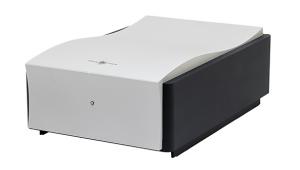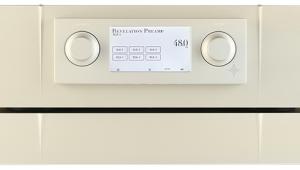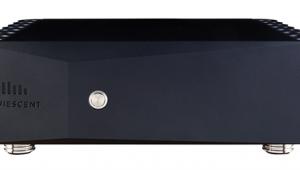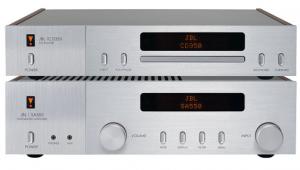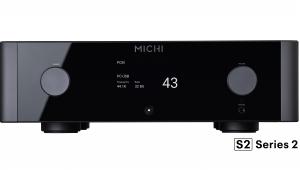Musical Fidelity Ams100 (£13,000)
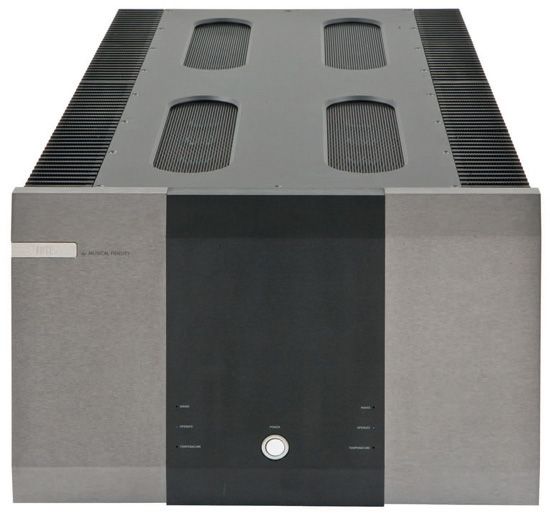
You can read all the specs, but nothing can quite prepare you for the arrival of Musical Fidelity’s AMS100. It stands over a foot tall, a foot-and-a-half wide, and by the time it’s plugged in and connected well over three-foot deep.
The circuit is a hybrid between that of the company’s smaller AMS50 and range-topping Titan. This new unit has the same topology as the Titan, but is Class A. It actually comprises four identical but separate amplifier ‘modules’ operated in a parallel push-pull, fully balanced circuit, with loudspeaker loads placed across the output ‘bridge’ at the end. The advantage of the bridge circuit is that various distortions should be cancelled out. This parallel operation raises output voltage and lowers source impedance, arguably yielding greater control and dynamics.
Of greater importance is the approach to passive power supply regulation, which is both novel and eminently sensible. Each channel has its own mains transformer, followed by normal diode rectification to supply the positive and negative voltage rails, with the usual reservoir capacitors. This is then fed through a custom ‘choke’, a double wound (bifilar) unit, in which both the positive and negative flow oppose each other. This is clever, as it promotes cancellation of noise (MF claims a noise reduction of 88:1), and will also help reduce the physical size of the four chokes required.
At the end of each of the power supply rails is a bank of high speed capacitors, rather than a couple of large value units. Musical Fidelity is unaware of anyone else who has tried this combination of chokes and low impedance reservoir.
LIGHT AS A FEATHER
From the moment we first heard it, there was a clear, open sound to this amp. The familiar drumming at the back of the set during a ‘warmup’ track of the Jacques Lousier Trio’s Plays Bach was absolutely incredible in its detail while the piano sounded somehow faster than we were used to. This was on a stone cold amplifier, dumped in the middle of the room, lightly set up with mis-matched speakers!
On a more serious auditioning, the lack of grain and compression were quite amazing. Sound stopped and started with remarkable freedom from any kind of ‘color’ or perceived distortion.
Playing some modern electronic music with seriously synthesized bass showed just how false these sounds could be at times, the amp shaking the ceiling. Meanwhile, Peter Hurford’s JS Bach, Great Organ Works seemed to gain a lower octave, yet managed to sound as light as a soufflé while doing it.
VERDICT
It’s hard not to be very impressed. The AMS100 excels in digging out low-level details, in low coloration and in accurate, fast dynamics. It manages to combine absolute control with finesse. Its high power consumption could concern some, but then maybe this is the ultimate Class A transistor amplifier.
Originally published in the Yearbook 2011





